2006.02.19 15:21
Quondam's 10th Anniversary
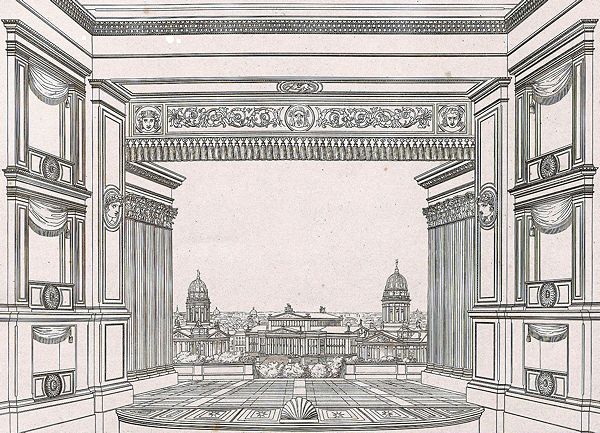
K.F. Schinkel, Schauspielhaus, Berlin, 1819-21.
A view in perspective of the stage (from the auditorium) as decorated for the dedication of the building.
Also see Arnell and Bickford, James Stirling: Buildings and Projects, bottom drawing, p. 327.
I guess the stage is a good place for reenactment. Or maybe the Schauspielhaus asked for a good marketing tool.
1988 stage backdrop of the Cornell University Performing Arts Center
1989 stage backdrop of the Compton Verney Opera House
Jagdschlo▀ Antonin 4005b
Jagdschlo▀ Antonin :: Guild House 4005c
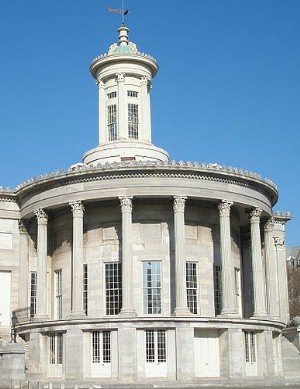
Merchant Exchange, Philadelphia, 1832.
|
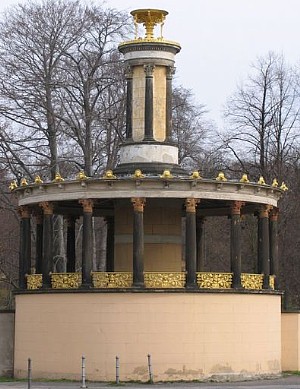
Grosse Neugierde, Berlin, 1835-37.
|
| |
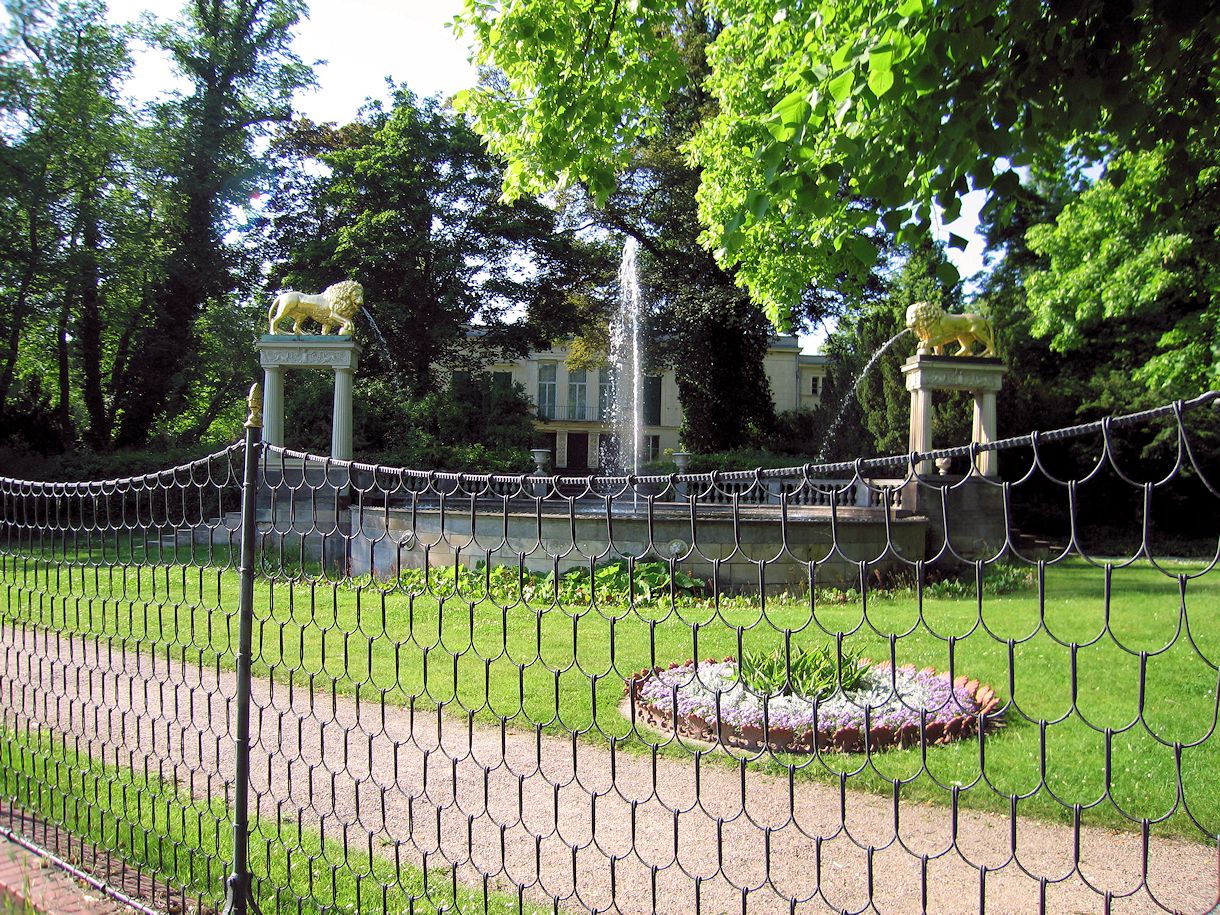
schockwellenreiter
2005.06.02 17:59
Re: the Edifice Complex
Maybe one aspect of the problem is that "creative context" is not just necessarily geographically based, meaning, an artist's context does not just necessarily mean the location within which the artists creates. Just because Gehry was in contact with other artists at Venice Beach, does that automatically mean that the work of these artists influenced Gehry's architecture? Again, not necessarily.
I do think creative context is at least often enough chronologically based. What else was going on around the world 1962-78? For example, what were the Progressive Architecture Design Awards like during those years?
I know I've seen working drawings of the chain link fence at Venturi & Rauch's Guild House (1960-66). Were these drawings published where other architects could see them back then? The earliest use of chain link fence by Gehry (that I can find) is at Santa Monica Place (1972-74). Interestingly, the big sign of Santa Monica Place evokes the Venturi & Rauch 1000 Oaks Civic Center competition design (1969) which was (at least) published in Learning from Las Vegas (1972). I wonder if any of these architects know that Karl F. Schinkel designed at Schloss Glienicke, Berlin (c. 1830?) what may be the first chain link fence ever.
2013.07.22 15:59
National Art Museum of China Entry by Gehry Partners
touchstone 2 : a test or criterion for determining the quality or genuineness of a thing
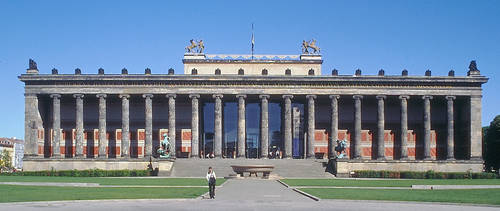
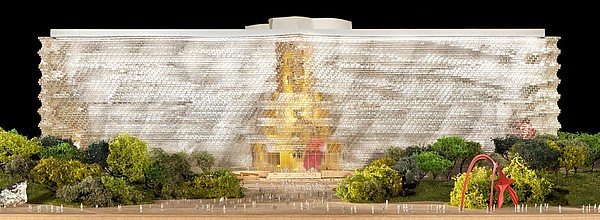
I fail to see how Schinkel's Altes Museum determines the quality or genuineness of Gehry Partner's National Art Museum of China. For a more realistic test of the genuineness of the museum's exterior, look at OMA's Beijing Book Building, 2003.
| |
2014.09.15 16:01 from tammuz
The End of History?
Quondam,
I understand that you've described different stages/types of imaginations, a reference being here-o/0007. I was trying to delve into it and perhaps understand it for myself. I also find it interesting material to think about.
Just a few points:
1- While understanding the above, would not the resultant outcomes of these imaginations not demonstrate the nature of the imagination construing them and really the premise behind this imagination (a chicken and egg kind of order; after all the imagination must be based upon some connection to a concurrent reality and vice versa) ? Furthermore, you speak of osmotic/assimilating/etc imaginations and, separately, osmotic/assimilating/etc architectures. Therefore, in a way of responding to my own question...having started reading Monoe's writing on Stirling in the Theoretical anxiety book, one could say that Moneo is describing what could amount to a prodigiously assimilative imagination that has produced different architectures, at different phases, many of which were not, in themselves as architecture, assimilative.
Therefore, perhaps you end up with a theory of an imagination and another one altogether of the product of the imagination.
2- Seperately, since you propose an electromagnetic imagination as a forthcoming phase - en lieu of an around-the-corner finality- I was wondering whether an electro-magnetic imagination would be based on actuality of tending towards the electromagnetic - ie. our reality, technologies and so on- which implies -as an outcome- a virtual decorporalisation since the denominator here -even by figurative association- is the magnetic field generated, the charge of electrons and so on. Movement dictated by the nature of poles -not things- and relational pull on the basis of differential charge(Lit.)= Associations (Imagination) that transcend embodied presence to fluctuate, in a virtual air, between -perhaps- poles of previous imagination (Fig.), operating within an archive of everything that has ever been, knowledge-wise, maybe?
I can see how to approach osmotic, metabolic and assimilating; their modi operandi are somewhat eponymous, even if by way of figurative language. But electro-magenetic still puzzles me.
3- Also, I guess thirdly, another question: While I understand that you propose these as different types of imaginations that rein over different stages of human history (correct me if I'm wrong), is it not possible to use these as atemporal tools by which to cognize the different natures of past and present historical occurences and movements - in the vein of, for example, describing a baroque moment, be it in a pre- or post- baroque era?
You already hint at it here-4403e:
The Pyramids, Stonehenge, St. Peter's (Vatican), Bilbao(?) -- extreme, extreme architectures.
The Pantheon, Hall of Mirrors, Versailles, entry sequence of Schinkel's Altes Museum, Kimball Art Gallery -- examples of the best osmotic architecture there is.
Classical Greek and Roman Architecture -- pure architecture of fertility.
The Hindu Temple -- the ultimate transcendence from an architeture of fertility to an architecture of pregnancy, whereas the Gothic Cathedral is an architecture of pregnancy, albeit virginal.
All of 20th century Berlin -- the metabolic (create and destroy and create and destroy and ...)
To understand architecture of assimilation, look at the Renaissance, but also look to early 20th century Purism to understand assimilation in the extreme, ie, purge.
Today's architectures are by and large assimilating and/or metabolic (contextual and/or 'deconstructivist'?).
You're very lucky if you ever see pure examples of electromagnetic or frequency architectures today because they are almost entirely architectures of the far off future.
There are many more examples to offer, but that's all for now. In general, I see all architectures as reenactionary (as opposed to reactionary).
Architecture reenacts human imagination, and human imagination reenacts the way the human body is and operates. The human body and the design thereof is THE enactment. The human imagination then reenacts corporal morphology and physiology, and architecture then reenacts our reenacting imaginations.
But interestingly, I again find this chasm between the description of an imagination and that of the architecture. Unless I have misunderstood. Do you mean that the design implication/intention/allusion of the Schinkel Altes Museum points to the osmotic (I could interpret that in conceiving of the fašade as being rendered a permeable one, for instance) or that the imagination that bore it submitted itself to a process of osmosis from other sources? This comes back to item 1. The difference I'm imagining, would that be valid?
|